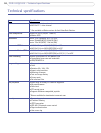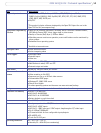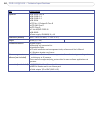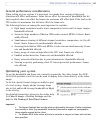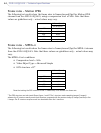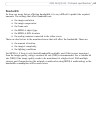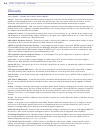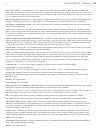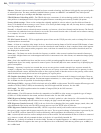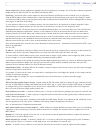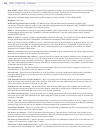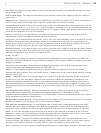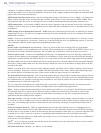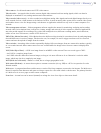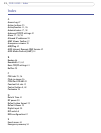
65
AXIS 241Q/241S - Glossary
CCTV video camera - A traditional CCTV video camera is an analog camera, available in both monochrome (black and
white) and color. Cameras can be set in fixed positions or placed on "Pan/Tilt/Zoom" devices, which allow the camera to be
maneuvered. Using a zoom lens provides a closer view of the object being viewed. CCTV analog video cameras can be viewed
over a computer network by using a video server.
CGI (Common Gateway Interface) - A specification for communication between a web server and other (CGI) programs. For
example, a HTML page that contains a form might use a CGI program to process the form data once it is submitted.
CIF (Common Intermediate Format) - CIF refers to the analog video resolutions 352x288 pixels (PAL) and 352x240 pixels
(NTSC). See also Resolution.
Client-server - Client-server describes the relationship between two computer programs in which one program, the client,
makes a service request from another program, the server, which fulfils the request. Typically, multiple client programs share
the services of a common server program. A web browser is a client program that requests services (the sending of web pages
or files) from a web server.
CMOS (Complementary Metal Oxide Semiconductor) - A CMOS is a widely used type of semiconductor that uses both
negative and positive circuits. Since only one of the circuit types is on at any given time, CMOS chips require less power than
chips using just one type of transistor. CMOS image sensors also allow processing circuits to be included on the same chip,
an advantage not possible with CCD sensors, which are also much more expensive to produce.
Coaxial cable - Coaxial cable is the standard means of transmitting analog video in a CCTV system. Coaxial is also used by
cable companies to distribute television in residential buildings.
Codec - In communications engineering, a codec is usually a coder/decoder. Codecs are used in integrated circuits or chips
that convert e.g. analog video signals into a digital format for transmission. The codec also converts received digital signals
back into analog format. A codec uses analog-to-digital conversion and digital-to-analog conversion in the same chip.
Codec can also mean compression/decompression, in which case it is generally taken to mean an algorithm or computer
program for reducing the size of large files and programs.
Composite video - A type of video signal in which the red, blue and green signals are mixed together.
Compression - See Image Compression.
Control unit - If a CCTV system has more than one camera, there must be a way to control the video signals going to
recorders and monitors. There are three basic types of Video Control Unit: Multiplexer, Switch and Quad.
DC-Iris - This special type of iris is electrically controlled by the camera, to automatically regulate the amount of light
allowed to enter.
Decoder - See Video decoder.
De-interlacing - See Interlacing.
DHCP (Dynamic Host Configuration Protocol) - DHCP is a protocol that lets network administrators automate and centrally
manage the assignment of Internet Protocol (IP) addresses to network devices in a network.
DHCP uses the concept of a "lease" or amount of time that a given IP address will be valid for a computer. The lease time can
vary, depending on how long a user is likely to require the network connection at a particular location.
DHCP also supports static addresses for e.g. computers running web servers, which need a permanent IP address.
DIP switch - A DIP switch is an electric switch that is packaged in a group in a standard dual in-line package (DIP).
DNS (Domain Name System) - DNS is used to locate and translate Internet domain names into IP (Internet Protocol)
addresses. A domain name is a meaningful and easy-to-remember name for an Internet address. For example the domain
name www.example.com is much easier to remember than 192.0.34.166. The translation tables for domain names are
contained in Domain name servers.
Domain server - Domains can also be used by organizations that wish to centralize the management of their (Windows)
computers. Each user within a domain has an account that usually allows them to log in to and use any computer in the
domain, although restrictions may also apply. The domain server is the server that authenticates the users on the network.
Duplex - See Full-duplex.
DVR (Digital Video Recorder) - A DVR records analog video to a hard disk in digital format. Most DVRs use the MPEG-2
format for encoding analog video signals.
Encoder - See Video encoder.




